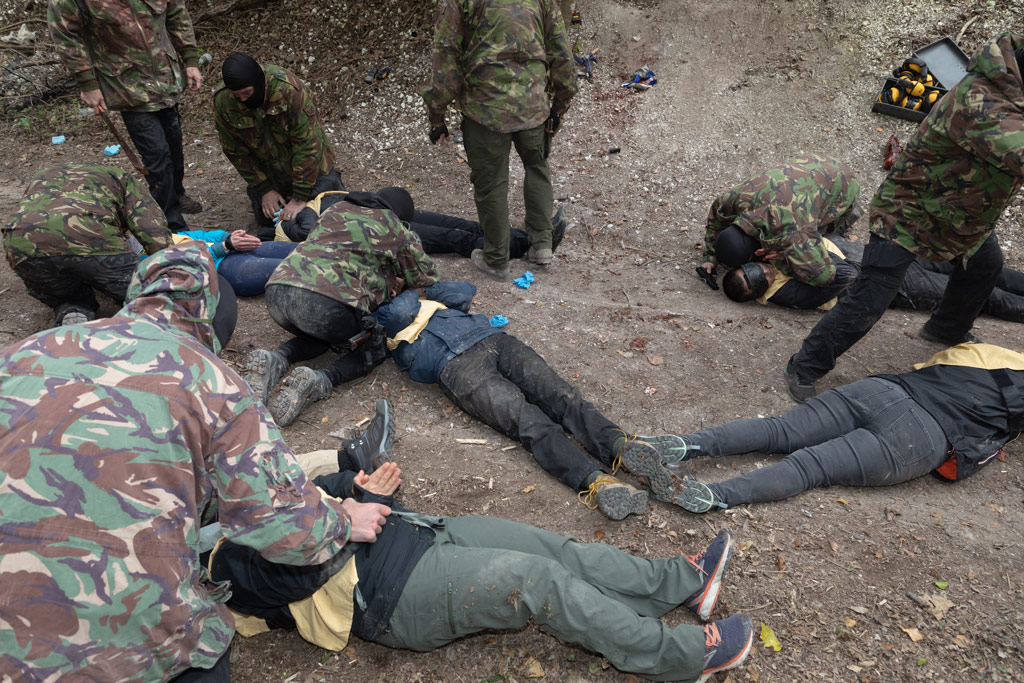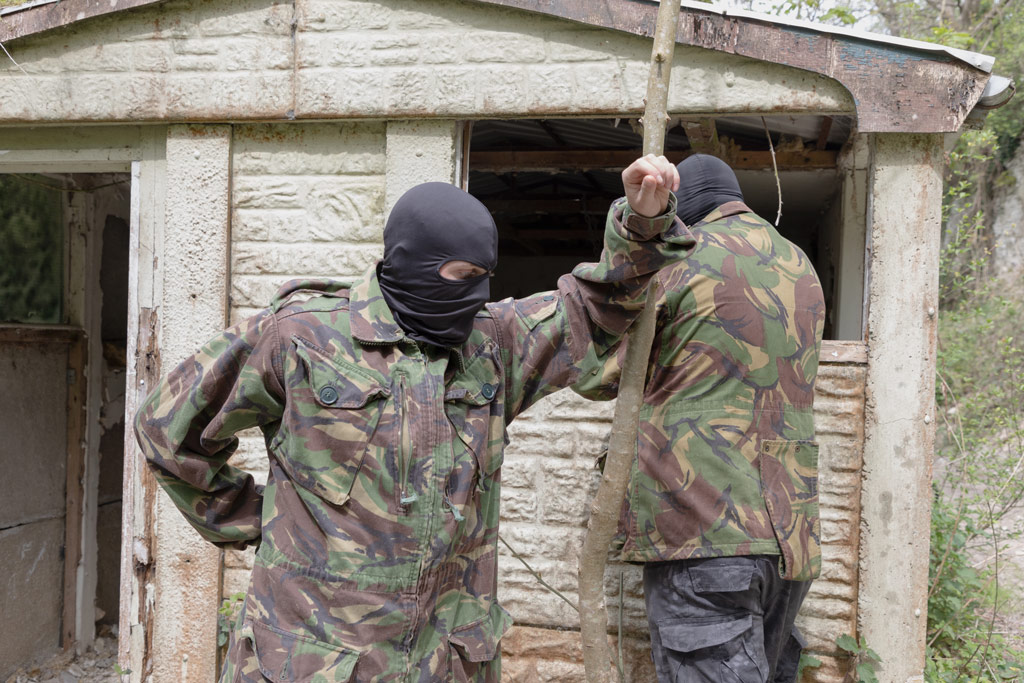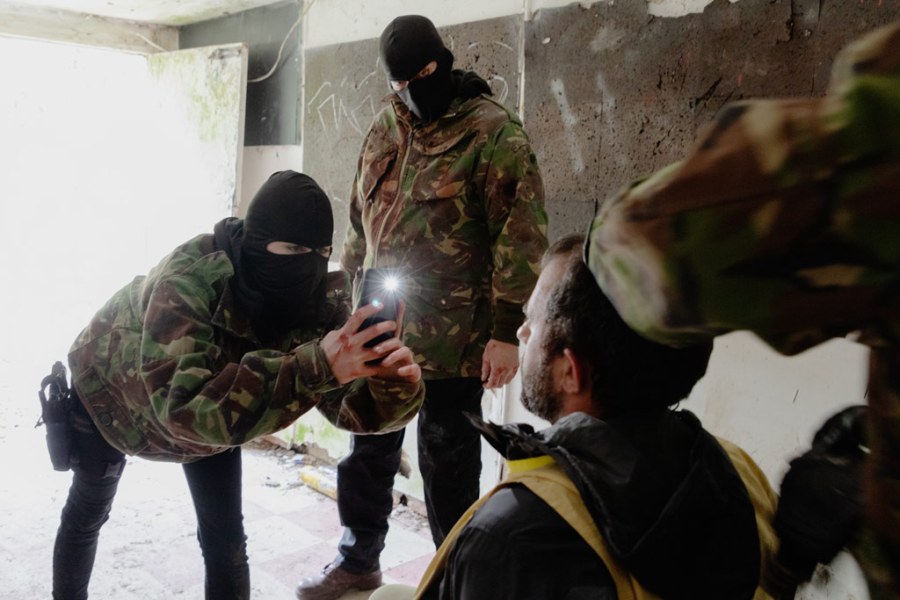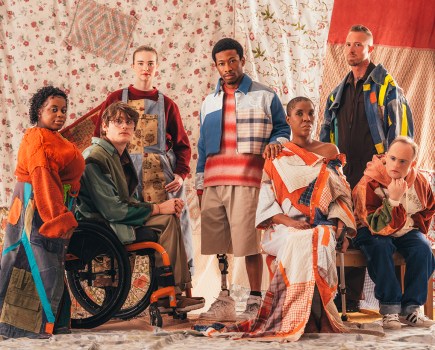You’ve just sat down at the desk, it’s in a nice open plan office space. Today you have to type up some celeb press – who’s getting divorced, who stuns in new photo, and who said the wrong thing? Across the room you hear a colleague being welcomed back to the office – he’s been working abroad for a few months… you’ve not really been paying attention… There are jubilant cheers so you wander over. He’s taking everyone to the pub, it’s the thing he’s missed most after being held hostage by the Taliban. Other than that, he tells the crowd, they treated him quite well…
In 2022, I was beginning a project photographing journalists. At the time, the UK had one in a maximum-security prison, and another as Prime Minister. Whilst the numbers differ, 2022 saw a sharp rise in violence against journalists and media workers. War in Ukraine was the first full-scale war in Europe since WW2, and it was just so accessible… My return flights were just £40!

But how do you prepare an influx of ordinary writers for kidnapping, explosives, and war-torn environments? Hostile Environment Training (sometimes known as HEFAT, HEAT, HETC, HETT, or HET) is the health and safety course for journalists working in war zones. I reached out to Hostile Environment Training Ltd, which runs at least two multi-day workshops twice a week, every week (apart from Christmas), to explore and photograph their operations.
While it’s critical that more people understand the need for HET courses, especially for freelancers currently eyeing those £40 tickets to Ukraine, the team are a bit concerned – I’m a young woman from London, an artist no less. I reassure them by talking about my brothers – two farmers, used to bad weather and the facts of life. They let me come along.

I arrive (at a location I’ve been asked not to identify), and they look me up and down. I was to be on the side of the militia. While the training starts off with some PowerPoints and seminars, a series of surprise attacks are due…
My new militia friends are lovely. We’re sat in an office as they fill out paperwork, hold their team meeting, and efficiently pack their props for the day – a large arsenal of guns, explosives, and blow torches, but most interestingly a wardrobe of costumes. The militia think my use of flash is great, and it is added to the rhythm of the torture which is to come. It was reassuring to know that if these journalists were going into real war zones, intruding on the lives of real victims, they were going to know what it felt like.

A bit later, I’m sat at the edge of a demonstration of IEDs, a short history, ‘They used to work like this, now this is more popular, in this region this is the trend…’ I’m hiding behind a bridge, on the ground, with some camo thrown over me.
I’m waiting for a large explosion. Very large. The militia are all eager for me to capture this, but I instead recall some advice from Simon Roberts – ‘turn around’. I slither along the floor, I’m almost under the table containing the prop IEDs, my camera is on the faces of the journos scribbling notes.
BOOM.

The shot I get is sad. They’re illuminated in this putrid orange, some look confused, others are still taking notes. If this was a genuine attack, this is the banal final moments of their lives. Over in less than 1/125, no time for a final sign-off. Their story just gets cut off.

The rest of my militia are busy. Many who run the course are ex-armed forces, missing limbs. They’ve discarded their legs and arms, covered themselves in blood, and have thrown themselves onto the wooded path in front of the journos. One ‘victim’ looks like a pair of tights full of jelly – his eyes are bulging, his knuckles are white, he’s pleading for help whilst blood squirts and leaks. His scream is so foreboding and unlike anything I’ve ever heard before. But he has.

It’s been a long day for these journalists already, but this marks the beginning of the crescendo of the training. Another wave of the militia are on them. The journalists’ hands are tied, and they have bags and blindfolds slung over their heads. This is how they’ll be for the next several hours.
They’re dragged and marched to a small shed, and the torture begins. I won’t give away all the tactics – we are sworn by the militia brotherhood – but there is one particular interrogation I remember.
‘Why are you here?! What do you do?! You’re a journalist, aren’t you? Taking pictures?! What you gonna say about this?!’
‘No, I’m not a journalist!’
‘You’re not a journalist?’
‘I shoot reportage!’
The militia interrogator didn’t even pause, ‘What the F— is reportage?!’
In negotiations with kidnappers, apparently, it’s not the best time to argue for the subtle nuances between reportage and photojournalism.

My photos, on the other hand, sit in a bizarre uncanny valley. The hoods can’t help but mimic the shocking photos of the very real Abu Ghraib, but the clean, super-bright artificial light (the Profoto A1) confuses things. Flash is loud, and intrusive, it is near-impossible to use in a war zone, however I’ve had many people think these photos are of a real torture scene. I must have just gained the trust of a real militia.
From Larry Fink to Martin Hartley, in order to shoot images you can’t be scared or intimidated by your surroundings. This applies for all good photography. You want your wedding photographer to push your second-cousin out the way of your ‘first kiss’ shot, not be hiding at the back of the room. Since this shoot, I’ve taken on many more ‘scary’ subjects and stories – from big stars with big egos, to Russian nazis hiding from the law. I like to think of myself as ‘The Access Queen’. But you’re only deserving of that spot if you have the right knowledge of your surroundings, and can look after yourself.

The Ukraine invasion happened in February; by March there were no bulletproof flak jackets available from any UK distributor. Many people, looking for their own Robert Capa adventure, felt that just slinging on a jacket would make them ready to report, but they’re missing a critical piece of the
puzzle. A bulletproof flak jacket on its own isn’t going to give you the results you want.

I loved my time at the HET camp. There are very few things which are fun, important, and have a positive impact on both those attending, and running the course. These ex-armed forces members continue to use their hard-earned experience in the field. Meanwhile, we get high-quality journalism from some of the most desperate and at-risk areas in the world, and keep those who are reporting safe(r) so the only thing they miss is a trip to the pub.
Jennifer Forward-Hayter is a photographer who focuses on documentary and social performance. She is based in London and Dorset. See more work at jenniferforwardhayter.co.uk
Related reading:







